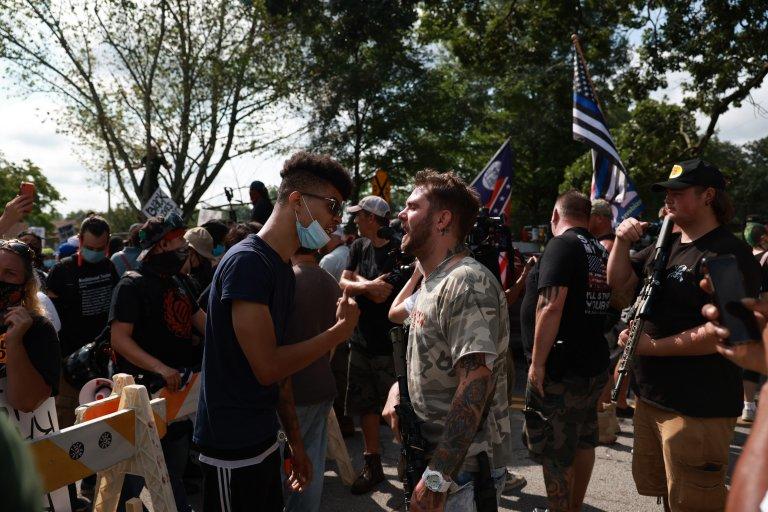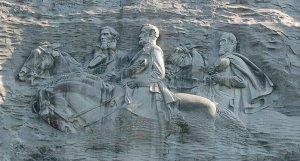
Caption
Stone Mountain is Georgia's most visited tourist attraction and is also a lightning rod for controversy. In the namesake city outside the state's Stone Mountain Park, protesters clashed in near downtown in August.
Credit: Lynsey Weatherspoon / Georgia Recorder



